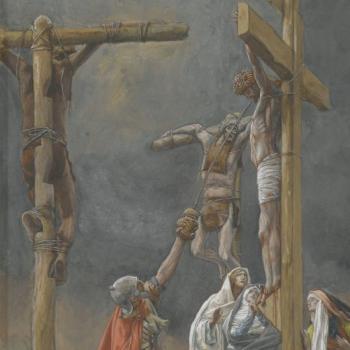 What do we make of the relation of the sacred and secular? For example, what makes Christian art Christian, if it is Christian? Do certain Christian symbols like the cross make a piece of art decisively Christian? Do the lack of those symbols make it unchristian or non-Christian? If the latter were the case, what then would one make of the Book of Esther, where God’s name is not specifically mentioned? Esther is considered sacred literature traditionally to Jews as well as Christians.
What do we make of the relation of the sacred and secular? For example, what makes Christian art Christian, if it is Christian? Do certain Christian symbols like the cross make a piece of art decisively Christian? Do the lack of those symbols make it unchristian or non-Christian? If the latter were the case, what then would one make of the Book of Esther, where God’s name is not specifically mentioned? Esther is considered sacred literature traditionally to Jews as well as Christians.
I remember having this discussion years ago, when one of my seminary classes and I went to see the play, Rent. During the intermission, I said to a few students that I saw more gospel themes and values in this pagan* play than I found in some Sunday School flannel graph presentations. Of course, a live play or a movie will always win out over flannel graph in terms of aesthetic appeal; but the raw earthiness of the play won out over the felt texture of some of the Christian conversations. Sometimes we know the Bible so well we no longer understand it. When the theme song of Rent cries out words about betrayal from landlords (homeless artists) and blood cells (AIDS victims) and lovers (broken relationships), I was taken onstage of the human tragedy where Christ lives. Just as there was no room for the homeless at the Holiday Inn in New York around Christmas at the end of the second millennium, so there was no room for Jesus in the inn at the beginning of the first millennium. Jesus knows their struggle, and Jonathan Larson alluded to it in his script. Yes, there was the allusion to the Christian story, albeit briefly, but the theme of betrayal and abandonment and longing for love and community was exceptionally secular yet sacred at the same time.
All the world is a theater of redemption, not simply the church. Secular plays and movies can serve sacred ends in pagan forms, not simply Christian art and Sunday School flannel graphs. Can you think of other examples beside my illustration of Rent? What stands out to you about such pagan forms and how they bear witness to sacred ends?
UPDATE: *There are different meanings and associations with the word “pagan,” as many dictionaries will indicate. Whenever I use the word to refer to non-Abrahamic religious or spiritual traditions, I capitalize the term out of respect for those traditions (here I am referring to articles/posts I have written in the past on the subject of Paganism in the ancient as well as contemporary world). In this article, the only time the word in question is capitalized is in the title, where all key words are capitalized. In the body of the article, I do not capitalize the term as I am conveying another association or meaning bound up with the term in contemporary English: irreligious, non-religious or secular. I certainly mean no harm to the Pagan community by my use of an alternative rending of the term “pagan.”
This piece is cross-posted at The Christian Post.

















